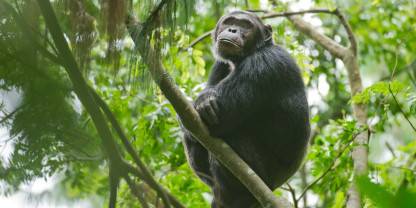Nyungwe National Park is a stunning birding destination. Casual birders will be amazed at the variety of colorful species fluttering around, while dedicated bird-watchers have an opportunity to mark off many lifers. It pays to ask for a specialist birding guide at the park’s headquarters as they can identify many species by call. Of specific interest are the many Albertine Rift endemics and birds unique to the highland forest habitat. Three birds unrecorded elsewhere on the eastern side of the Albertine Rift are Albertine owlet, red-collared babbler and Rockefeller’s sunbird.
Birding Specials Treats for Avid Birders
(ARE) Albertine Rift endemic = only lives in the Albertine Rift- African hill babbler
- Albertine owlet (ARE)
- Archer’s robin-chat (ARE)
- Bar-tailed trogon
- Blue-headed sunbird (ARE)
- Dusky crimsonwing (ARE)
- Dwarf honeyguide
- Grauer’s swamp warbler (ARE)
- Great blue turaco
- Handsome francolin (ARE)
- Kivu ground thrush (ARE)
- Kungwe apalis (ARE)
- Mountain masked apalis (ARE)
- Neumann’s warbler (ARE)
- Purple-breasted sunbird (ARE)
- Red-collared babbler (ARE)
- Red-faced woodland warbler (ARE)
- Red-throated alethe (ARE)
- Regal sunbird (ARE)
- Rockefeller’s sunbird (ARE)
- Ruwenzori apalis (ARE)
- Ruwenzori batis (ARE)
- Ruwenzori nightjar (ARE)
- Ruwenzori turaco (ARE)
- Shelley’s crimsonwing (ARE)
- Strange weaver (ARE)
- Stripe-breasted tit (ARE)
- Yellow-eyed black flycatcher (ARE)
Best Time for Bird Watching
Birding in Nyungwe is excellent throughout the year. Since so much of forest birding depends on calls, the best time is from March to May, when birds are most vocal. From June to September, many birds are feeding their fledglings and keep quiet, only becoming vocally active again in January or February. April is the wettest month and the logistics of birding might become a challenge, as trails get very slippery.

